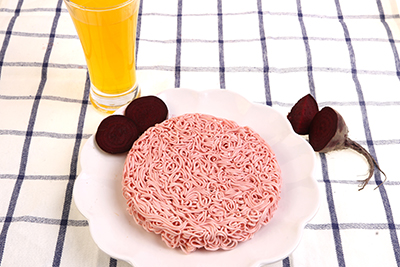The Rise of Natural Orange Food Coloring and Beetroot Colour in Modern Food Production
As consumers become increasingly health-conscious and ingredient-aware, the demand for natural alternatives to synthetic additives in food and beverages has grown significantly. Among the most sought-after components in this shift are natural food colorings. Vibrant, plant-derived pigments like natural orange food coloring and beetroot colour are gaining popularity in everything from baked goods to beverages, snacks, and dairy products. These natural colorants not only provide visual appeal but also align with the clean-label movement that emphasizes transparency, safety, and minimal processing.

Natural orange food coloring is typically derived from sources such as annatto, paprika, beta-carotene, and even carrot extracts. Each of these sources brings a slightly different hue and functional property to the table, but all offer a rich, warm orange tone that appeals to consumers. Annatto, extracted from the seeds of the achiote tree, is particularly popular for its mild flavor and stability under various processing conditions. Beta-carotene, a pigment found in carrots and sweet potatoes, is also widely used, not only for its color but for its nutritional value as a precursor to vitamin A.
One of the main advantages of using natural orange food coloring is its consumer perception. Natural colors are often viewed as safer and more healthful than synthetic dyes like FD&C Yellow No. 6 or Red No. 40, which have been linked to hyperactivity and other health concerns in certain studies. With increasing scrutiny from regulators and advocacy groups, many food manufacturers are choosing to reformulate their products using natural colorants to maintain market relevance and consumer trust.
Beetroot Colour, derived from the root of the beet plant, is another standout in the world of natural food coloring. Known for its vibrant red to deep pink hues, beetroot extract offers a bold color that works well in a wide variety of applications. It is commonly used in bakery items, beverages, ice creams, dairy products, and even meat alternatives to give a rich, appetizing look. Beetroot color is water-soluble and generally provides good stability under low heat and acidic conditions, although it may fade with prolonged exposure to high temperatures or light.
Beyond its visual appeal, beetroot colour also has nutritional and functional benefits. Beets are rich in antioxidants and nitrates, which have been associated with improved blood flow and reduced blood pressure. While the coloring process may reduce some of these nutritional qualities, using beet-derived pigments still carries a health halo that resonates with today's health-focused consumers.
For food manufacturers, the challenge lies in balancing color vibrancy with processing needs. Natural colorants can be more sensitive to heat, pH levels, and storage conditions compared to synthetic dyes. However, advancements in formulation technology have led to significant improvements in the stability and performance of these natural ingredients. Encapsulation techniques, pH buffering, and natural stabilizers are some of the tools used to maintain color intensity throughout the shelf life of a product.
The movement toward natural colors is not just a trend—it represents a long-term shift in consumer behavior and industry standards. Clean-label products, which emphasize ingredients that are familiar, minimally processed, and free from artificial additives, are becoming the norm rather than the exception. Natural orange food coloring and beetroot colour fit perfectly into this narrative, offering vibrant, safe, and appealing options for food coloring.
In conclusion, as the food industry adapts to changing consumer preferences, natural orange food coloring and beetroot colour are playing a crucial role in shaping the future of product development. These plant-based pigments provide more than just color; they contribute to a healthier, more transparent, and environmentally friendly approach to food manufacturing. Their rise is a testament to the growing demand for natural, trustworthy ingredients that align with a holistic view of health and wellness.

Comments
Post a Comment